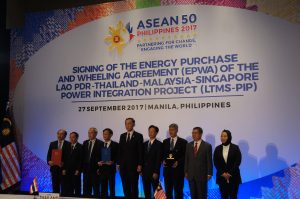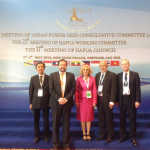Singapore to Import Electricity from Malaysia
On 26th October 2020, Singapore’s Minister for Trade and Industry announced that Singapore plans to import electricity from Malaysia, starting with a two-year trial, with the eventual aim of enhancing the share of clean energy on the country power mix.
Historical context
There are two components in the historical context of Malaysia’s and Singapore’s power-sharing arrangements. First, underwater cables have connected the electricity grids of Singapore and Peninsular Malaysia since the mid-1980s. Their purpose is not commercial, but rather to help each country manage grid stability and supply security when necessary.
Second, and more recent, was the proposal in 2013 for the governments of Lao PDR, Thailand, Malaysia and Singapore to launch an experimental electricity trading system known as LTMS-PIP: The Lao PDR-Thailand-Malaysia-Singapore Power Integration Project.
The rationale of LTMS-PIP was to export some of the huge excess of Lao’s hydropower to its southern neighbours. The trading system would not only provide countries access to additional supplies of electricity, but these supplies would also be low-carbon.
LTMS-PIP is part of broader strategy to develop a multilateral power market across the Association of Southeast Asian Nations (ASEAN). An ASEAN-wide market would allow electricity to be traded across its ten member states and would take advantage of the ASEAN power grid, the construction of which has been progressing slowly since the 1990s.
However, Singapore did not join LTMS-PIP immediately after it was mooted in 2013. The likely reason for this is that Singapore had and continues to have a large excess of generating capacity that amounts to some 80 per cent of peak demand. As a result, additional supplies of electricity are not needed. Moreover, local power generating companies were already under heavy commercial pressure due to the surplus capacity. This excess capacity had driven down prices to levels where profits were difficult to achieve and some generators were running at a loss.
So, LTMS launched without the “S” and electricity started to flow from Laos to Peninsular Malaysia in 2018. The amount was just 100 MW, equivalent to about 0.5 per cent of Peninsular Malaysia’s peak demand. Two years later in 2020, the quantity was raised to 300 MW.
Significance of Singapore’s announcement
The recent announcement shows that Singapore is now joining the other three countries and that LTMS-PIP is about to be operationalised fully, some 7 years after initial conception. As in the original plan for the project, the quantity of electricity for the first two years starting in 2021 is 100 MW. This is equivalent to just 1.5 per cent of Singapore’s peak demand.
The government will select a company to import the electricity based on these criteria: The electricity should be low-carbon, the price must be competitive in Singapore’s power market and the importing company must have a track record of reliability. In the intervening period, the existing transmission cables from Malaysia will be upgraded and utility boards of the two countries will need to review and, if necessary, improve the existing technical and regulatory frameworks.
Singapore’s decision to rejoin LTMS-PIP is politically significant. For many years, commercial considerations were the highest priority for the power industry. But in 2016 the Government issued its Climate Action Plan which included a commitment to reduce the intensity of greenhouse gas emissions by 36 per cent from 2005 levels by 2030, and for these emissions to reach a peak at around 2030.
Earlier this year, the government made a further commitment, aiming to halve the level of peak emissions by 2050 and achieve net-zero emissions “as soon as viable in the second half of the century”. Rejoining LTMS-PIP gives Singapore the option of importing progressively larger quantities of low-carbon electricity in the future – starting first with hydro-electricity.
Looking to the future, the main sources of renewable electricity to be Laos and Australia as both have the potential to deliver large quantities of renewable electricity. Plans are progressing to build a cable that transmits renewable energy from Australia to Singapore. Importing renewable energy over such long distances from Laos and Australia will involve significant costs relating to the construction and maintenance of transmission cables.
Security of electricity supply need not be threatened provided Singapore has at least two sources of imported clean electricity supply as well as adequate level of domestic power generation capacity, both natural gas and renewable (although domestic renewable energy can only provide a modest share of Singapore’s future electricity needs). That being said, prolonged droughts in the Mekong River Basin could easily reduce the availability of hydropower for sustained periods.
The Minster’s announcement marks the start of an experiment in electricity supply that could lead to a profound change in Singapore’s energy mix and sources of supply.
For the full text of the commentary, visit: https://www.channelnewsasia.com/news/commentary/malaysia-electricity-asean-grid-renewable-energy-climate-change-13414568
The podcast, visit: https://www.channelnewsasia.com/news/podcasts/the-climate-conversations/singapore-malaysia-electricity-import-trial-13476076







